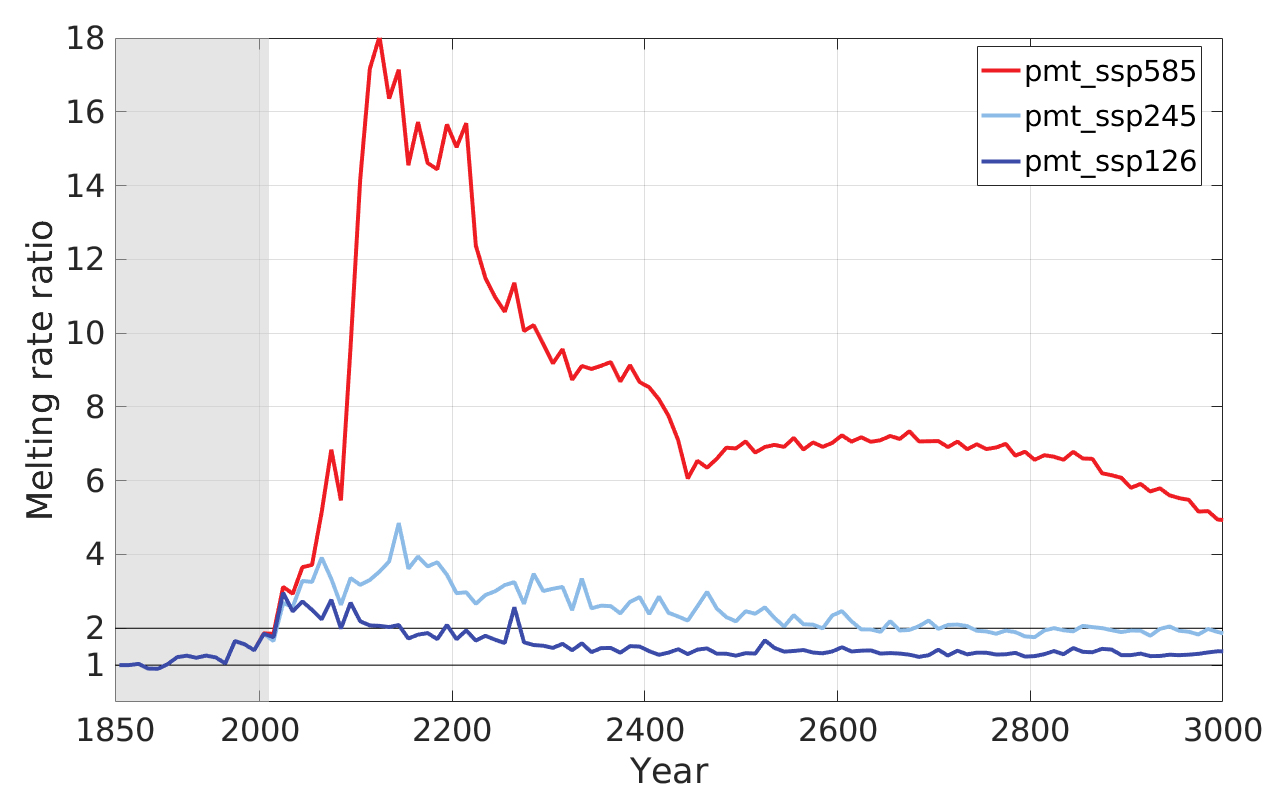Delayed response of subsea permafrost thaw to anthropogenic warming
Permafrost soils were formed on non-glaciated land during the glacial periods. About 18 to 6 thousand years ago, the Arctic coastal regions were flooded due to the sea level rise of around 120 m following the ice sheet collapse. About 3 million km2 – almost 1.5 times the size of Greenland – of carbon-containing permafrost soils were overlaid by oceanic waters, mainly on the shallow East Siberian Shelf. Due to the relative warmth of the ocean water, this permafrost is continuously thawing. It will disappear in the course of several millennia, returning most of the captured carbon to ocean and atmosphere. Climate change has the potential to severely accelerate the thawing thus increasing the carbon release rates. The subsea permafrost has received much less attention than its terrestrial counterpart in the IPCC assessment reports which thereby miss potentially important climatic feedback. This study performed within the EU Horizon 2020 project Nunataryuk aims at filling this gap.
The researchers modified JSBACH, the land surface component of the Max Planck Institute Earth System Model, and simulated the subsea permafrost thaw until year 3000. They found that the subsea permafrost response to climate changes is delayed. The differences in thawing rates between the mitigation scenarios and the strong forcing projection only starts to appear towards the end of the 21st century, revealing extreme differences in the 22nd century (Fig. 1). In the strong forcing projection, the subsea permafrost ice disappears at a rate more than 15 times larger than in a pre-industrial climate. In the more moderate projections, this ratio exceeds 4 only for a short period. This highlights that there are components of the climate system which feed back only on a longer time scale than the standard climate projections, which usually stops at year 2100. The strong increase in subsea permafrost thawing coincides with the almost complete disappearance of sea ice. In the strong forcing scenario, the temperature of the bottom water on the shelf increases by more than 10°C following the sea ice disappearance around year 2100. Such a temperature increase boosts the heat transfer into the ocean sediments and thus favours the melting of the subsea permafrost. In total, the strong forcing projection has melted about 40% of the subsea permafrost ice by year 3000 whereas none of the mitigation projections melt more than 15%.
Stiig Wilkenskjeld comments: “Our results suggest that sea ice effectively acts as a lid preventing strong heating of the ocean waters on the Arctic shelf. This link between sea ice and subsea permafrost ice is an important finding few people have thought about before.” Victor Brovkin adds: “As ice in oceanic sediments is difficult to observe, monitoring of sea ice can give us a rough estimate of how quickly subsea permafrost will thaw”.
The next goal is to couple permafrost thaw with methane emissions in collaboration with several partners in the Nunataryuk project, including the sediment biogeochemistry group in Université Libre de Bruxelles and the ocean biogeochemistry group at MPI-M.

Original publication:
Wilkenskjeld, S., Miesner, F., Overduin, P. P., Puglini, M., and Brovkin, V.: Strong increase in thawing of subsea permafrost in the 22nd century caused by anthropogenic climate change, The Cryosphere, 16, 1057–1069, https://tc.copernicus.org/articles/16/1057/2022/, 2022.
Contakt:
Stiig Wilkenskjeld
Max Planck Institute for Meteorology
Email: stiig.wilkenskjeld@mpimet.mpg.de
Prof. Victor Brovkin
Max Planck Institute for Meteorology
Email: victor.brovkin@mpimet.mpg.de
